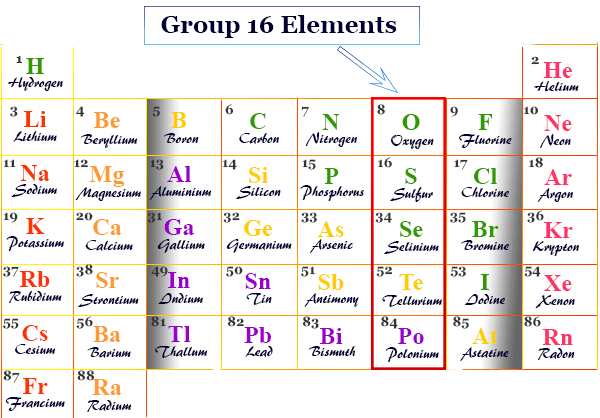Group-16 elements or Group-VIB contains chemical elements like oxygen (O), sulfur (S), selenium (Se), tellurium (Te), and polonium with the atomic number 8, 16, 34, 52, 84. Oxygen is the most abundant element and makes up to 47 percent of the earth's crust in the form of oxides and oxoacids. It supports the respiration of the animal body and essential for human life. Sulfur occurs in the native state and metal sulfides like pyrites (FeS2), galena (PbS), zinc blended (ZnS), and metal sulfate like gypsum (CaSO4, 2H2O). It makes up to 0.04 to 0.03 percent of the earth's crust. Selenium and tellurium contain fewer quantities in sulfide ores. Polonium was discovered by scientist Curies from the radioactive materials pitchblende in 1898. It also from the radioactive decay of radium.
Properties of Group-16 Elements
The elements of group 16 are collectively called chalcogen from their natural association with copper (chalcos). Oxygen has two allotopic forms like dioxygen (O2) and ozone (O3). Ozone is formed in the upper atmosphere by the action of solar UV radiation on oxygen. The ozone layers protect the earth from harmful electromagnetic radiation coming from the sun. Nitrogen oxide and chlorofluorocarbons destroy the ozone layers. The element sulfur forms a large number of allotropes containing puckered rings with 6 to 20 atoms or chains. Common rhombic and liquid sulfur contains an S8 ring with a melting point of 115°C. The trend in various properties among the group members parallels those observed in previous groups. The first member of Group-16 like the oxygen has a strong tendency to form a chemical bond or pi-bond with p-p orbitals and a strong hydrogen bonding.

